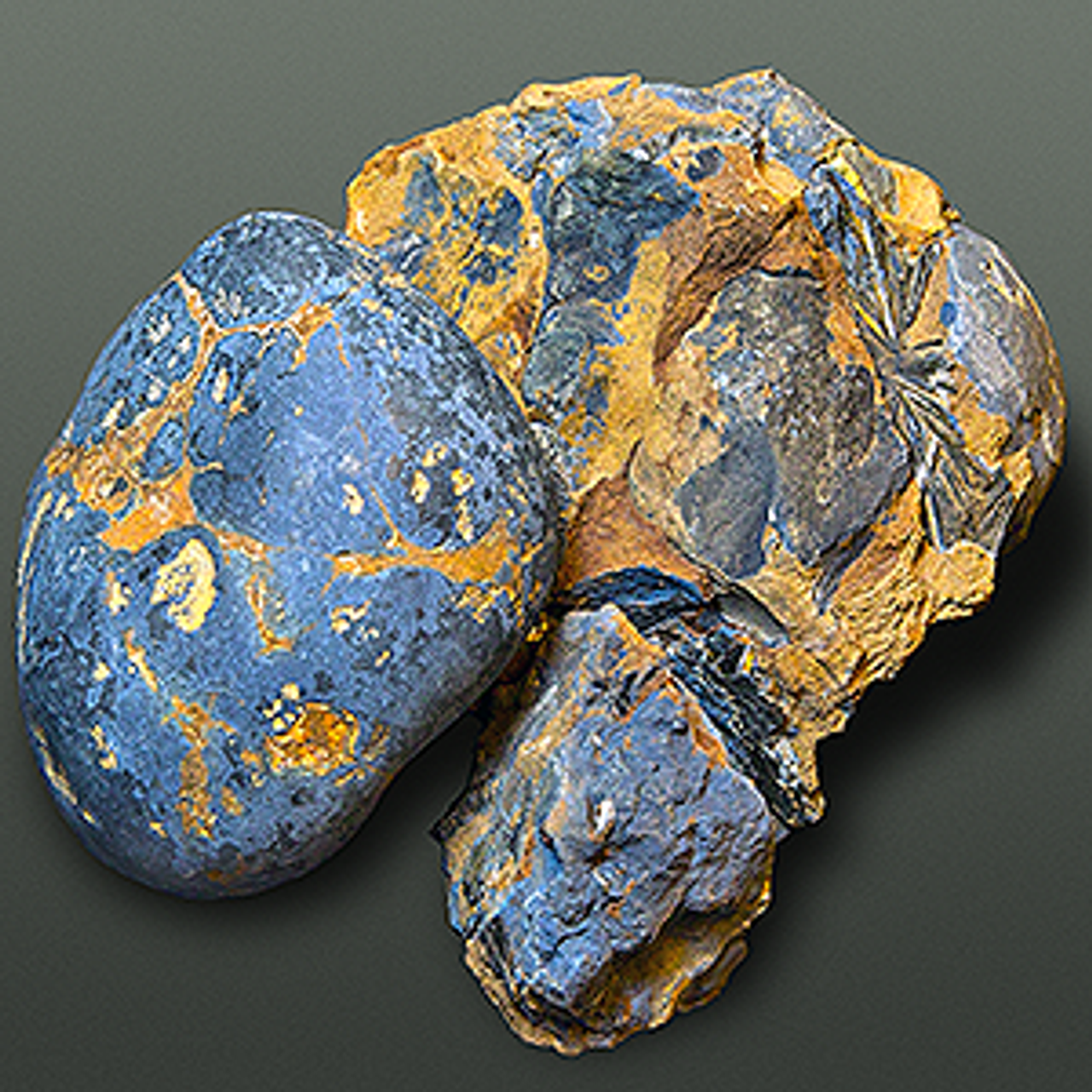Vivianite pigments

Vivianite, Blue ocher, natural mineral indigo
Vivianite, a naturally occurring pale blue earth pigment composed of ferrous phosphate, owes its name to John Henry Vivian, who discovered the mineral at Wheal Kind in St Agnes, Cornwall.
This pigment is insoluble in water and typically manifests as dark indigo-blue to blackish green crystals, often found alongside pyrite and copper. Vivianite can also be found in an earthy form, commonly associated with bones, decaying wood, and other organic, phosphate-rich environments like peat bogs and clay beds. It's not unusual to find vivianite crystals inside fossil shells or attached to fossil bone. While pure fresh vivianite appears colorless in big broken specimens, it readily oxidizes, transforming into deep blue or bluish-green hues upon exposure to air.
The vivianite minerals I use originate from Victoria, Australia.
Iron, a potent chromophore element, was among the first transition metals recognized for its pigmenting properties. Vivianite gained prominence as a natural hydrated ferrous phosphate pigment in medieval Europe, serving as a cost-effective alternative to the expensive lapis lazuli. The latter, a member of the ultramarines, owes its prized blue tone to sulfur poly anions. However, the aging process of blue vivianite pigments in old paintings remains a perplexing challenge for conservators, awaiting a comprehensive explanation.
Historically, vivianite's use as a blue pigment was primarily documented in the 12th and 13th centuries, prevalent in artworks from Germany and the British Isles. It has been identified in medieval paintings and architectural decorations across Germany, England, Sweden, and Norway. Referred to as blue ocher, ferrous phosphate pigment was favored by the School of Cologne in the 13th and 14th centuries. The earthy form of the pigment was also present in Dutch 17th-century paintings, including Johannes Vermeer’s renowned piece "The Procuress" (1656). Vivianite's pigmentary application has gained increased attention and recognition in recent years.
Traditionally employed in iconography, vivianite pigments in medieval artifacts have often retained their original hue. However, some instances showcase partial alteration of pigment particles to a yellow tint, resulting in an unintended green appearance. This discoloration phenomenon has been observed in both Romanesque wall paintings and 17th-century Dutch artworks.

